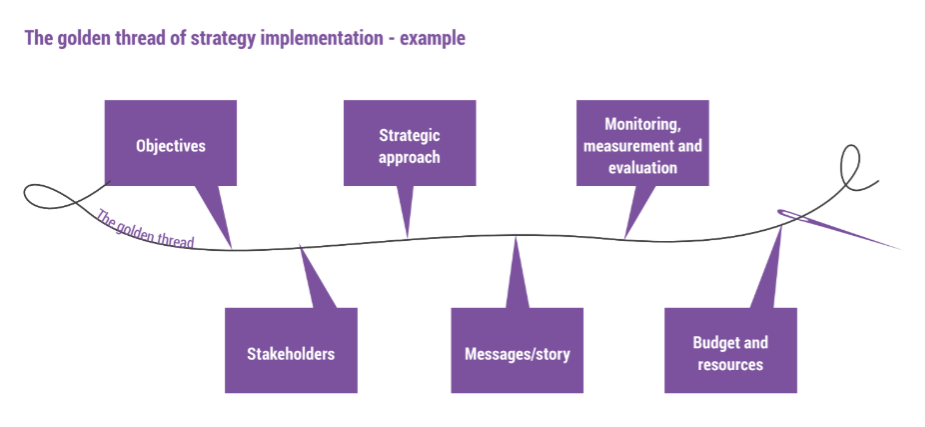How can a strategy provide the key to your PR success? You may have wondered whether your business actually needs a communications strategy. Perhaps you’ve got this far without one – you keep everything in your head, so why do you need one written down now?
Well, there are several major benefits for having a communications strategy in place and written down – whether you are hiring a public relations/marketing professional or doing it all yourself. But first, let us look at…
What is a communications strategy?
Simply put, a communications strategy is how a business intends to use PR and marketing to reach its target audience. A basic strategy will include your business objectives, the key messages that you want to communicate, how you intend to reach your target audience, and of course details on the target audience you’re trying to reach.
5 reasons to have a communications strategy:
Having a strategic approach for your communications provides a ‘golden thread’ that runs through your communications activities linking everything together. Companies that have a strategy foster a sense of common purpose, encourage growth and build resilience.
Here are my top 5 reasons to have one:
- To help you clarify your goals and objectives: If you really want to boost your business, all PR / marketing activity should tie into your business objectives. Having this all written down in one place will ensure everyone involved in the communications strategy is on the same page, sharing the same goals, vision and mission.
- Target different audiences effectively: You will have a list of key stakeholders – all with different ways they like to be kept informed. A communications strategy will keep you focussed on what works for each group. Your target audiences are the people that are going to buy from you or help champion your business, so being confident that you’re targeting the right people with the right messages, in the right format, is crucial.
- Work smarter not harder: There are many different ways to spread your message. Having them all in one place will help you to settle on which activities to prioritise so that you aren’t continuously pulled in different directions.
- Make things happen: A communications strategy (and plan) is a great way to make things happen. You can see where you need help and can delegate responsibility.
- Be a better leader and spot opportunities: Having a communications strategy and plan in place also allows you to spot any opportunities which may have otherwise been missed. As communications professionals, we always look at ways we can add value to your business and maximise your opportunities – by having everything written down allows us to spot any wins that would help boost your business.
Is a communications plan the same as a strategy? Do you need both?
The communication plan sits alongside the strategy and is ‘the working document’ that contains the details of how you’re going to achieve your strategy. For example, your strategy may state that you want to raise awareness of a new product you’re launching later this year. Your plan will outline the nuts and bolts of how you’re going to do this including your timings.
Getting started with your strategy…
So now you know why it’s so important to have a communications strategy in place, you’re almost ready to get going on your strategy. Here’s a few simple bullets to help get you started:
- Acknowledge the purpose of the document – include a short paragraph about your communications strategy document and what you intend to use it for.
- Your business objectives – Briefly describe here your end goal. I.e Business growth? Increase in sales? Establish yourself as an expert?
- Communications objectives – What do you hope to share through your communications, how and why do you want to publicise your business?
- Target Audience(s) – Details on all of your key stakeholder groups.
- Key Messages – What key messages are that you want stakeholders to understand and act upon.
- Approach – What communication and marketing tactics are you planning to use, how will they reach your target audience and why they are most suitable.
What to do with your strategy?
To get the most out of your strategy, don’t put it away in your desk drawer/desktop folder once you’ve done it. Once you have your agreed strategy and have assigned roles, look to develop a plan or ‘working document’ with all of the tactics involved to help you achieve your objectives. At this point, you can consider budget as well as resources.
In summary…
Think of a communications strategy like laying the foundations of a house – it’s the essential prep work that holds everything together. As tempting as it is to just go ahead and start your marketing, how do you know if your activities are going to have the biggest impact on your business? Without a strategy, you could be missing out on opportunities or (even worse) wasting your time and efforts…
If you would like help with your communications strategy, please feel free to book a free Discovery Call
Other blog articles you may find interesting:
Photo credit: PRAcademy
How a strategy can provide the key to your PR success

